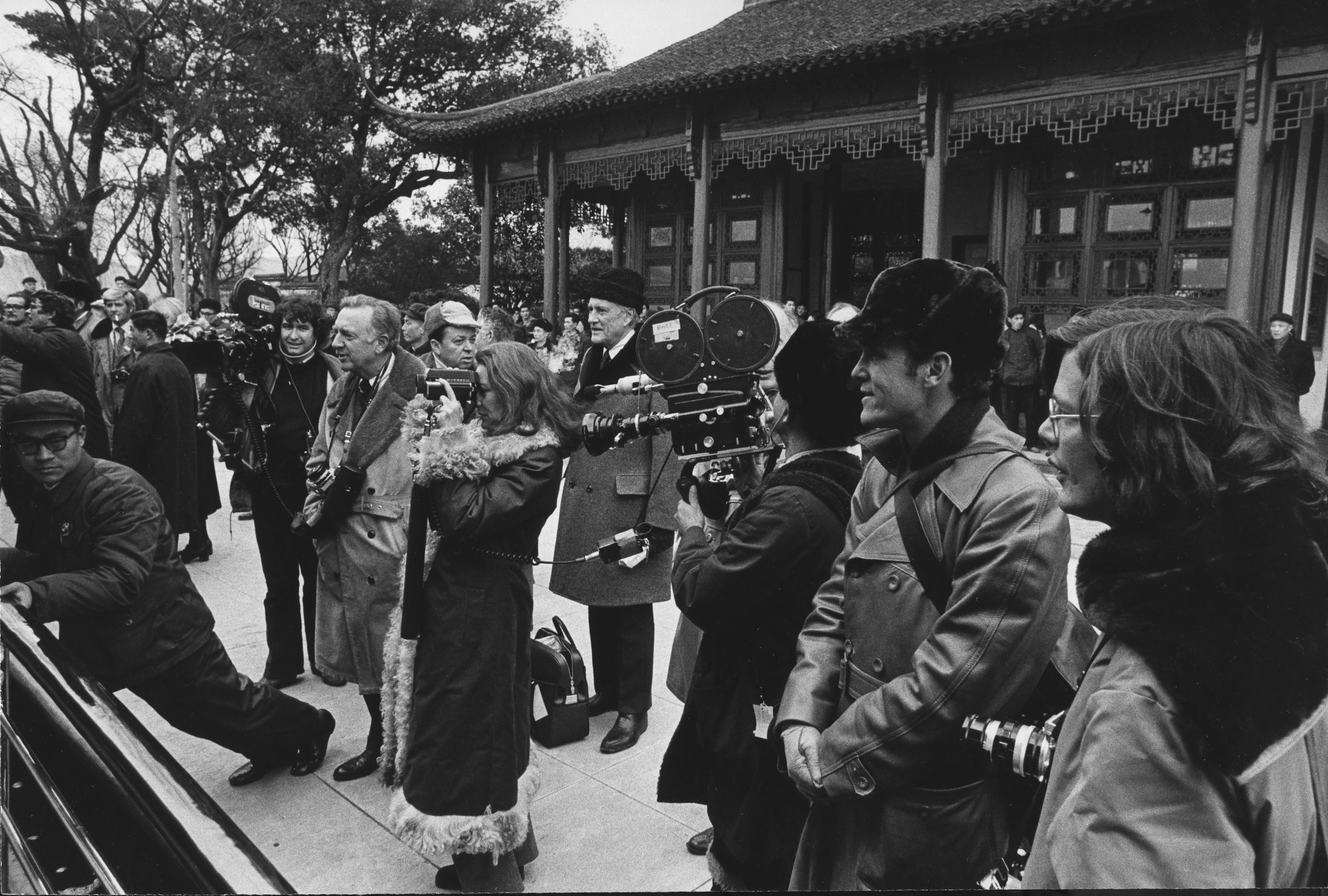Often termed “The Week that Changed the World,” President Nixon’s 1972 trip to China was founded upon intense planning. Geopolitics were at the fore, but society’s reaction to the trip formed a complementary component, and great strategy went into determining the role of the media. As President Nixon writes in his memoirs, “Despite the almost miraculous secrecy we had been able to maintain, the China initiative was actually one of the most publically prepared surprises in history.”
As far as two years before his presidency, the careful observer would have noted Richard Nixon’s stance toward China in his Oct. 1967 Foreign Policy essay, “Asia After Viet Nam;” he subsequently alluded to this essay in his inaugural address, saying “We seek an open world… a world in which no people, great or small, will live in angry isolation.” Subsequent hints were dropped along the way, including an interview in Time magazine of October 1970, where RN declared that he wanted to go to China before he died, and a toast at dinner with Romanian President Ceausescu in which he referred to ‘red China’ by its official title the “People’s Republic of China,” giving important diplomatic recognition to its legitimacy.
Preparing the public for the announcement of the trip was only one step; more important was coverage of the actual event for providing the U.S. people’s first impression of the PRC and the new U.S.-China relationship. The following documents are compiled staff memos from the White House Special Files, and give a glimpse into the high priority and intense planning that went into the media portrayal of the event.
“Our publics and our different peoples would begin to get used to the idea that we would be moving in a different direction.” – Winston Lord, 29th Nixon Legacy Forum
The first document is a memo between Dwight Chapin (Nixon’s personal assistant) and Peter Daily that reveals the extent to which and how the Nixon administration influenced media portrayal. It implies that they conducted research into platforms and content and from this they designed the type of program. They were not at the beck and call of the media, but actively created an environment where media programing would be in sync with President Nixon’s intentions.
The following memos detail the strategies they were contemplating. A primary concern was depoliticizing the issue. The memo between John Scali (Special Consultant to the President 1971-1973 and later U.S. Ambassador to the U.N. 1973-1975) and H.R. Haldeman (White House Chief of Staff) regarding a documentary of First Lady Pat Nixon’s trip illustrates the way media content was geared to focus on ‘soft’ issues of culture and to capitalize on persona. This is also evident in the next memo brainstorming depictions of President Nixon, which says “it is important to show… his concern and compassion… greater dimension in personal warmth… reflect the President’s true personality.” To achieve this they planned to use “informal and spontaneous moments” of RN’s interaction with Chinese counterparts – depicting natural good will. Much of the final news broadcasts of their trip were of the President and First Lady touring a great monument or at a banquet with Chinese diplomats.
The ‘informal atmosphere’ and cultural exchange desired was by no means spontaneous; the timing of the footage was decidedly premeditated. As Ambassador Nicholas Platt describes in the 29th Nixon Legacy Forum on the Opening of China, held by the Richard Nixon Foundation on November 19th 2014, “The rhythm of each day was that you had a telegenic event in the morning, a telegenic event in the evening, and you did all the work and the talking and so on in the middle of the day. And so the American people got Nixon on the Great wall, or the opening banquet, or other things at prime time, either breakfast or evening.” (YouTube video time 1:07:22).
Likewise, the Chinese had their own public opinion to attend to, and limitations from this necessitated additional planning on behalf of the Nixon Administration. As President Nixon writes in his memoirs, “Two decades of virulent anti-American propaganda could not be undone overnight, and the Chinese masses would take time to assimilate the new line emanating from Peking.” As informal as the touring activities were in concept, the Chinese went through great preparations to strictly control who the U.S. delegation members interacted with. President Nixon recalls First Lady Pat Nixon saying, “She felt that our reception had somehow been restrained. She had been kept from meeting people…” The last memo serves as a good example of the reciprocal approval/rejection of exchanges between U.S. and Chinese administrations as they both worked to plan a meeting that met their divergent press needs.
“This trip was very very carefully planned, by the white house and the Chinese, to have maximum public impact on the American People… And the impact of that week was I think to change the American attitude towards the opening to China.” – Ambassador Platt, 29th Nixon Legacy Forum, (Time 1:07:22).
Transcript of Blurred Words in Documents:
Page 1: Memo; Dwight L. Chapin to Peter Dailey; Feb 9 1972
-Line 3: taken as much of the
-Line 4: not be particularly
-Line 5: at 10:00 a.m.,
-Line 6: of the type of
-Line 7: standpoint. You
-Line 8: give,…. Possible of what “we think
-Line 9: be helpful in terms of
Page 3: Memo; Dwight L. Chapin RE: China Trip Documentary Film; February 9, 1972
-Bullet 1 Line 13: footage of the hardworking President, but our eyes must always
-Bullet 1 Line 14: spontaneous moments which
Page 4: Memo; Dwight L. Chapin RE: China Trip Documentary Film; February 9, 1972
-Bullet 3 Line: 7: do a brief interview
-Bullet 3 Line 11: perhaps we should get it on
-Bullet 4 Line 1: we have essentially
-Bullet 4 Line 2: must be addressed
-Bullet 4 Line 3: is all over the lot –
-Bullet 4 Line 4: warm and folksy,
-Bullet 4 Line 5: not be effective. (In terms of …

